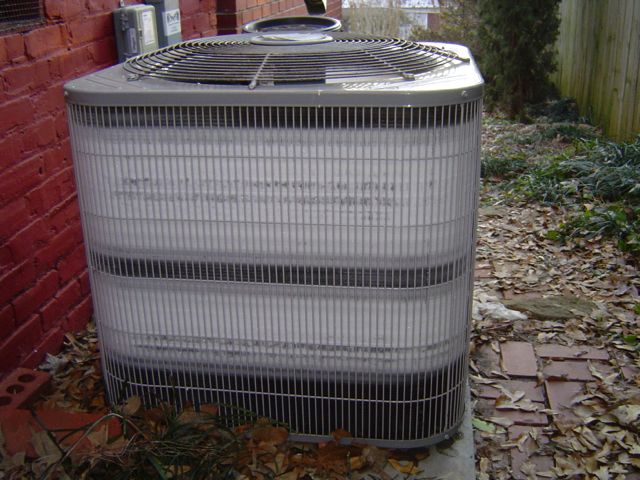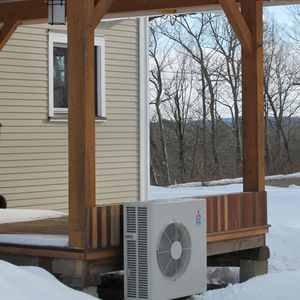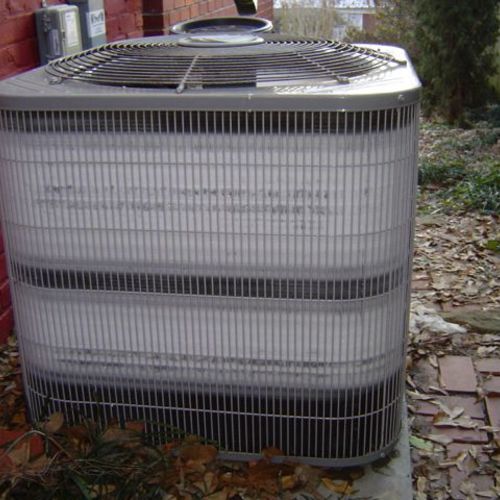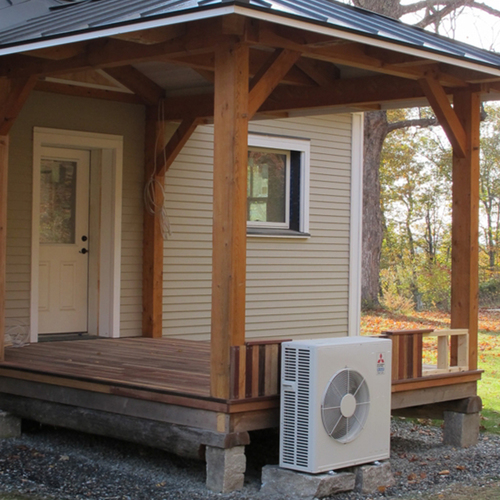Image Credit: Energy Vanguard
Image Credit: Energy Vanguard A heat pump reversing valve allows the same piece of equipment to be used for both space heating and cooling.
Image Credit: Energy Vanguard
Cold weather is coming back to Atlanta this week, so let’s talk about heat. An increasingly popular way to heat buildings these days is with heat pumps, even in cold climates. But how do they work?
How the heck can this device take heat out of cold outdoor air and put it inside a building? Ask people how a refrigerator or air conditioner works, and they think they understand it. Those are devices that make coldness. Right? But when you think about the bigger picture, heat pumps do the same thing as refrigerators and air conditioners: They move heat from a cooler area to a warmer area. Does that mean heat pumps also “make coldness”?
Follow the heat
It really is possible to get heat out of cold air, so to understand heat pump operation, let’s start with the basics. Heat flows when you have a temperature difference (ΔT). If you’re trying to get heat out of 40°F air, what do you have to do? Put it in contact with something that’s at a temperature lower than 40°F! That’s the job of the refrigerant in a heat pump.
Heat won’t naturally pass from the cold outdoor air into a warm building. But when you use a heat pump to do a bit of work, we can get heat to move from a cooler to a warmer place.
Heat pumps work on exactly the same principle as air conditioners and refrigerators. All three of these devices are, in physics terminology, refrigerators (or better yet, refrigerator engines). They move heat in what seems like the opposite direction specified by the second law of thermodynamics: from cooler to warmer. But recall the full statement of the second law, as given by Rudolf Clausius: “Heat can never pass from a colder to a warmer body without some other change, connected therewith, occurring at the same time.”
The refrigeration cycle in heat pumps
There are four basic processes in the refrigeration cycle. All are important, but in my opinion, the expansion valve is where the magic happens. Whether you’re using it for a refrigerator, air conditioner, or heat pump, getting that big temperature difference is the key, and that’s what the expansion valve does for you.
Here’s an example for you that you may have experience with, especially if you’re a serious bicyclist. CO2 cartridges contain carbon dioxide under high pressure. When you use them to inflate a bicycle tube, for example, the cartridge gets very cold. Try it. It also works with aerosol cans like hairspray and the compressed air sold for dusting keyboards. This is a thermodynamic property. When they’re allowed to expand freely, their temperature drops.
The same thing happens in a fridge, air conditioner, or heat pump. The refrigerant is pushed through the expansion valve, and the temperature of the refrigerant drops — a lot. The refrigerant going through the outdoor cool (the evaporator) is usually 10 to 20 F° lower than the temperature of the outdoor air.
So, that cold outdoor air is actually the warmer object when it comes in contact with the outdoor coil of a heat pump in heating mode. And as we know, heat likes to move from warmer objects to cooler objects. Once we get that heat from the air into the refrigerant, it’s just a matter of bringing it into the house and then transferring it into your home’s air.
The second law of thermodynamics works
So now the mystery is solved. The second law of thermodynamics has withstood another test of its validity. Heat does move from a colder body (outdoor air) to a warmer one (indoor air), but we have to make “some other change” for this to occur. That change involves doing work to run the compressor, which forces refrigerant through the expansion valve. The refrigerant then gets cold enough to absorb heat from outdoor air. The compressor keeps doing work to move that now warmed and evaporated refrigerant into the house, where it can dump the heat from the condensing coil.
The operation of heat pumps can be confusing. My guess is that our personal experience with cold outdoor temperatures blinds us to their nature. When we go outside in winter, our bodies are much warmer than the surroundings, with a core temperature of about 98.6°F. We experience cooling. We’re always cooled off by cold outdoor air, so it’s hard to imagine that that same air could ever heat anything else up.
Now you know how they work though. It’s not really that difficult, is it?
_________________________________________________________________________
Allison A. Bailes III, PhD is a speaker, writer, building science consultant, and the founder of Energy Vanguard in Decatur, Georgia. He has a doctorate in physics and writes the Energy Vanguard Blog. He also has a book on building science coming out in the summer of 2022. You can follow him on Twitter at @EnergyVanguard. Photos courtesy of author, except where noted.
Weekly Newsletter
Get building science and energy efficiency advice, plus special offers, in your inbox.
















0 Comments
Log in or create an account to post a comment.
Sign up Log in